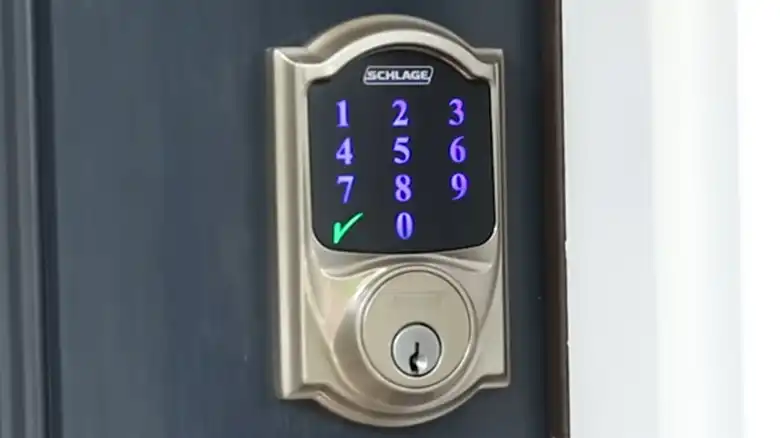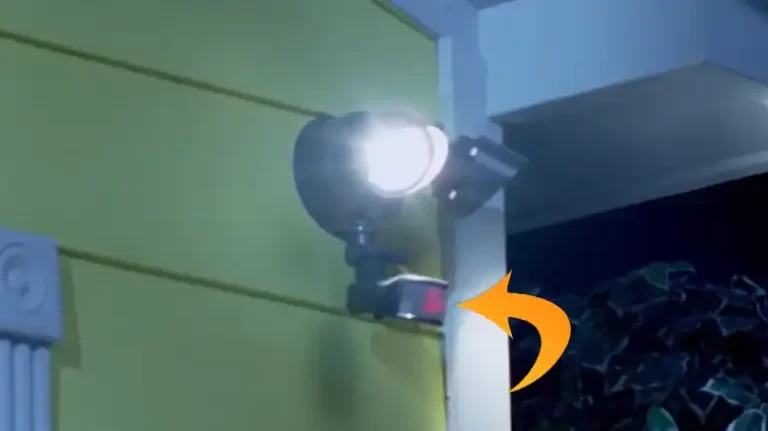Best Practices for Locking a Keypad Door Securely
Keypad locks on doors are becoming increasingly popular in homes and businesses nowadays. They provide convenience by entering a code to unlock, rather than fumbling for keys. However, it’s important to properly lock your keypad door to keep your home or office secure.
You just lock it by entering a numeric code while setting it up for the first time, which is what I found out when I tried them for the first time a few months back.
Here’s a step-by-step guide on securely locking a keypad door.

Locking a Keypad Door
Ensure the door is fully closed before attempting to lock it. Pull or push it closed completely so that the lock can engage.
- Input your unique entry code carefully into the keypad by pressing each digit firmly. On most locks, this will be a 4 to 6-digit passcode unique to you.
- Double-check that you enter the full code and have not missed any numbers. Entering the wrong code or partial code could leave the door in an unlocked state.
- After entering the full code, look for a button on the keypad labeled “lock” or “set” and press it. This activates the locking mechanism.
- If there is no separate lock button, wait 5-10 seconds after entering the code to allow the lock to engage automatically.
- Verify that the door is properly locked by checking that the handle does not turn or open the door. Look for a small indicator light on the keypad to light up when locked.
- Avoid accidentally entering your code twice which could unlock the door again. Change your code periodically if you are concerned that someone else has seen it.
- Check and replace batteries if needed for battery-powered keypad locks to ensure proper operation.
Troubleshooting Issues Locking the Door
If you are having issues getting your keypad door to properly lock, try these troubleshooting tips before calling for service:
- Check battery levels if you have a battery-powered lock. Replace batteries if charge is low. Most locks will give some indicator (beeping or flashing light) when battery levels are depleted.
- Ensure none of the buttons are stuck or jammed. Carefully inspect keypad and try pressing buttons multiple times firmly to unstick them if needed. Faulty or jammed buttons could lead to issues entering the code or activating lock.
- Attempt your entry code multiple times, pressing firmly when inputting the code numbers. Sometimes not pressing the buttons properly can lead to unlock failures.
- Listen for any abnormal noises from the lock when trying to engage it. Grinding or buzzing noises could indicate a mechanical or electrical issue needing repair.
- Inspect alignment of all lock components and ensure latch bolt extends/retracts smoothly. Adjust strike plate position if latch and strike plate are misaligned preventing proper locking.
- Consult manufacturer instructions to identify the audible/visible error cues when there is a locking failure. Error codes can provide insight into mechanical vs electronic issues.
- As a last resort, safely check if the latch bolt movement is mechanically hindered. Carefully pry open locked door while avoiding any damage or excessive force. Have a professional assess and replace lock if faulty operation continues despite troubleshooting.
Let the locksmith or manufacturer know the issues you’re facing and troubleshooting steps taken when requesting service repairs.
Additional Tips
- Make sure that your code is secure and difficult to guess. Avoid using easily guessed numbers, such as your birthday or anniversary.
- Change your code regularly, especially if you suspect that someone else knows it.
- If you have multiple users for your keypad door, assign each user their own unique code. This will help you to track who is entering and exiting your home.
- If you are having trouble locking your keypad door, consult the manufacturer’s instructions.
Sum Up
Following these steps correctly using the keypad, unique entry code, and lock interfaces will securely lock your keypad door and keep your home safe and secure. Let me know if you need any clarification or have additional questions in the comment section below.






